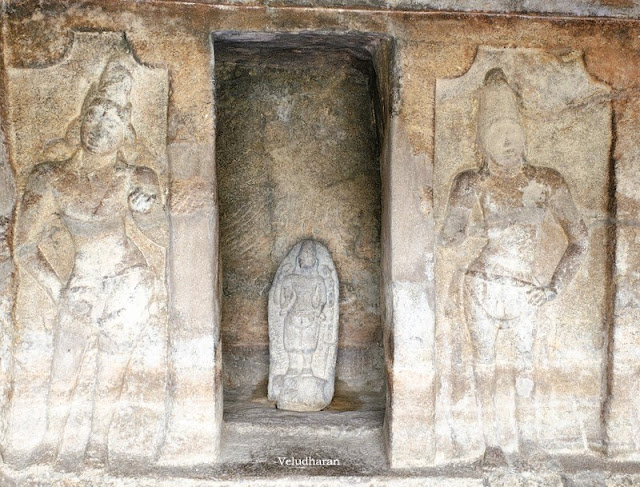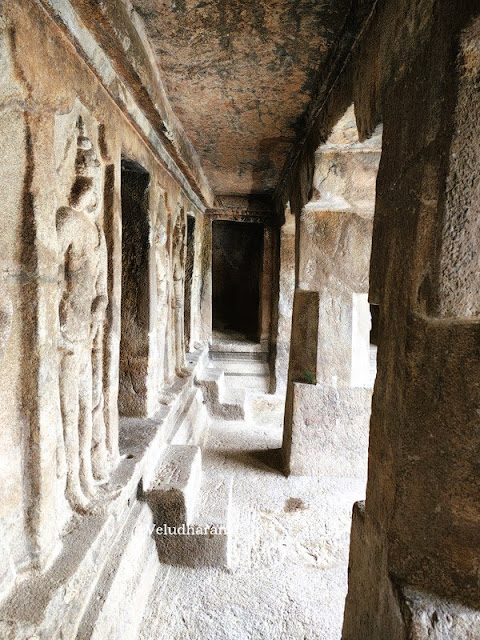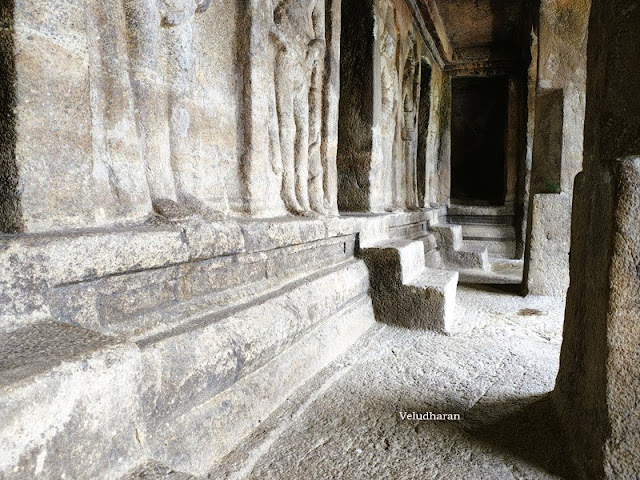14, March 2014.
After my darshan of Sri Veeramathi Amman, our Kula Deivam
at Talguni near Kolappalur, Gobichettipalayam, I intend to add the history
of our Kula Deivam. Till the end of the 20th century, our village people believed
that Sri Murugan was our Kula Deivam and used to go to the temple near Getticheviyur (Thoranavavi) on the Gobichettipalayam to Tiruppur bus route. Then a section of our people argued that a male god
cannot be our Kula Deivam and must be a Female. Some of our caste
people traced and found out the present Sri Veeramathi Amman mentioned above address. After that, our people started
worshiping Sri Veeramathi Amman as Kula Deivam. When I inquired, our community elders could not help trace the history. In the
meantime, many people inquired about Sri Veeramathi Amman and its history. This
kindles me further to do research on this subject.
THE DIFFERENT TYPES OF
FEMALE GODDESSES
1. GODDESS BECOMES GODDESS
Normally, we used to worship two types of female gods. One
type is the concerts of female gods, who came to earth to safeguard human
beings from evil. They are normally Sri Kaliamman, Sri Mariamman, Sri
Selliamman, Etc.
2. HUMANS BECOME GODDESS
The other type of female goddess is the Females who live on the
earth & sacrifice themselves, through Sati, and live as goddess / Kula Deivam in the minds of their sons, grandsons, great-grandsons,
etc. This has been followed for generations. They worship them as a goddess with regular poojas, annual festivals, etc. Also, any
important functions in their family will be celebrated after worshiping their
Kula Deivam. FEMALE GODDESS BECOMES AS KULA DEIVAM in three ways, and
they are.
1. SATI.
The widow who lost her husband ended her life by jumping into her husband’s funeral pyre. (Voluntarily - But in many cases, it is
not so; they were forced to do SATI). This practice was adopted from
the start of human civilization, maybe from Vedha Ugam. Later, it was
modified in different ways.
THEEPANJAMMAN AT PUNNAMMAI
THEEPANJAMMAN TEMPLE NEAR CHEYYUR
2. BURIAL.
The widows create fire separately and jump into the fire, sacrificing their lives. In South India, the dead husbands are not
cremated; instead, they are buried. In this case, the widows are also buried along with their husbands alive. Later, the same was modified. The
widows are asked to lie down along with their husbands, and rituals are only conducted without being buried with their husbands.
3. LIVES THE REST OF THEIR LIFE AS WIDOWS.
The widows will live single, even
though they are very young. They are not permitted to join any of the
functions, will not have the kumkums on their forehead, wear white saris, and will not wear any jewels. It is still believed that the purpose
of travel will not be fruitful if widows with white saris either cross their way or come in front.
For the remembrance/ monuments of the widows who
sacrificed their lives, the people followed different methods.
1. SATI KAL or NADU KAL.
A stone with inscriptions of those who had undergone the SATI is
installed in a place where everybody can see. Also, they may be installed
at the burial/cremation ground. In north India, palm prints of the
widows (maybe many numbers whose husbands are killed in battles )
are chiseled on stones. The SATI stones are also installed in a place
where the three roads join. In some places of Tamil Nadu, the stones with
inscriptions of their names are placed in a common place of the village, and the villagers used to do poojas in a particular month, like Aadi in the Tamil
Month.
2.
SUMAITHANGI KAL
Sumaithangi Kal was also installed in remembrance of the lady who died during
delivery or during pregnancy. This was mainly installed near the village/
shops/ Madams/ Ponds/ to unload their headloads and take rest. After resting, the
head loads can be picked up by them without much effort and without
others' help. Since I was from a remote village in Erode District of Tamil
Nadu, I still remember my good old days. During my younger days, my mother
and Villagers used to travel by walking for a distance of 4 km to Kunnathur
to purchase weekly provisions and vegetables from the weekly market (Sandhai), which assembled every Monday. There was no bus at that time. There was a "Sumai Thangi stone" installed in my Village long back, which is not there now.
On the north
side of Tamil Nadu, there are temples with the goddess named Theepanjamman. This
temple was constructed in remembrance of the widows. The Sati was
abolished through Laws by the British in India. Even though it is a
punishable act, instances are happening in India here and there.
CONCLUSION
OF OUR KULA DEIVAM SRI VEERAMATHI AMMAN’s HISTORY
Our Kula Deivam Sri Veeramathi Amman must also be a brave mother who sacrificed for our ancestral father. Our forefathers might have installed a
NADUKAL. Later, ancestors might have given the shape of the
present Sri Veeramathi Amman. But one thing is certain, the
temple has been visited by our ancestors whose footprints are lying in the
temples, and their souls must circumambulate Sri Veeramathi Amman, to get
blessings of Sri Veeramathi Amman and give blessings to us when we go to the
temple. There are many Sri Veeramathi Amman Temples in Coimbatore,
Erode, and Salem districts of Kongu Nadu for different castes and sections of people.
ANNUAL
FESTIVAL: CLICK HERE FOR ( 2012 ) & ( 2013 )
SrI Veeramathi Amman - our Kula Deivam
2012 annual festival - Santhana Kappu alankaram
To see the Maavilakku procession, please CLICK HERE
2013 - Annual festival Santhana Kappu Alangaram
The contents of the above articles are subject to change
depending on the facts that we receive from the readers
--- OM SHIVAYA NAMA ---





























































